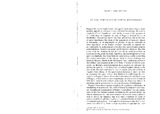| dc.contributor.author | Kargopoulos, Phillipos V. | |
| dc.date.accessioned | 2020-09-08T13:10:53Z | |
| dc.date.available | 2020-09-08T13:10:53Z | |
| dc.date.issued | 1992 | |
| dc.identifier.issn | 0165-0106 | |
| dc.identifier.uri | http://hdl.handle.net/11728/11556 | |
| dc.description.abstract | Popper's theory of simplicity has three great merits advocating it: it has
intuitive appeal, it proposes a clear criterion for judging the relative
simplicity of rival hypotheses, and, finally, it answers the question of
the justification of simplicity by way of Popper's general theory of
falsification. Though the theory has clear application only in the case
of curve hypotheses, like those of the trajectories of heavenly objects
in astronomy, or of subparticles in physics, it can be extended to
other hypotheses of the mature sciences, especially as natural laws
are expressible in mathematical terms that have corresponding graphic
representations. Despite the usual anti-Popperian objection, that this
is not what the scientists in fact do, I the theory could have been an
excellent starting point for both Popperian and non-Popperian investigators
of simplicity, had it not been for some serious doubts concerning
the formal correctness of the theory. | en_UK |
| dc.language.iso | en | en_UK |
| dc.publisher | Springer | en_UK |
| dc.relation.ispartofseries | Erkenntnis;no. 37, pp. 27-35, 1992 | |
| dc.rights | © 1992 Kluwer Academic Publishers. | en_UK |
| dc.rights.uri | http://creativecommons.org/licenses/by-nc-nd/4.0/ | en_UK |
| dc.source.uri | https://link.springer.com/article/10.1007%2FBF00220631 | en_UK |
| dc.subject | Research Subject Categories::SOCIAL SCIENCES::Social sciences::Psychology | en_UK |
| dc.subject | Popper's theory of simplicity | en_UK |
| dc.subject | simplicity | en_UK |
| dc.title | On the simplicity of the curve hypotheses | en_UK |
| dc.type | Article | en_UK |


